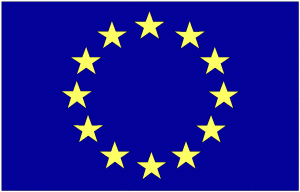University of St Andrews (USTAN) & Edinburgh Cancer Centre (ECC)
Healthcare management is an increasingly complex, multi practitioner driven entity, precipitating a pressing need to collect and share highly confidential and personal medical data, obtained from a variety of sources; including personal medical devices. Data sharing may be necessary through a variety of means, including public networks and other systems, whose security cannot be implicitly trusted. It is the role of the University of St Andrews, under the leadership of Dr Juliana Bowles to coordinate the Serums Project. Serums forms part of the Horizon 2020 initiative and combines the expertise of nine institutions across seven countries. The Serums project aims to center future healthcare provision around patient need, enhancing personal care, and maximizing treatment quality, while ensuring patient trust in the security and privacy of their confidential medical data.
ECC use case summary
A Scottish case study to demonstrate the potential of the Serums system has been conceived with Dr Peter Hall, medical oncologist from the Edinburgh Cancer Centre, Western General Hospital. Edinburgh Cancer Care Personalised Treatment will provide a patient app where cancer patients will be able to add information securely and confidentially on their symptoms (i.e. appetite, nausea) between chemotherapy treatments, and clinical staff (e.g., GP or oncologist), can adapt treatment if required to improve their outcome and toxicity levels.
The University of St Andrews are developing a dashboard to help oncologists observe, monitor, and analyse the condition of patients over time. It can also be used to analyse the effect of different chemotherapy treatments when given to patients with similar characteristics, and consequently influence future decisions to improve the well-being and survival rate of patients. The ultimate aim is to build a toxicity predictor to predict the toxicity of chemotherapy treatments based on history and feedback from patients. Data was extracted for training the machine learning models from three main databases (Chemocare, Trak, and OncologyDB) within the Edinburgh Cancer Centre (ECC). The data contained information on treatment cycles, recorded side effects (in this case, toxicity level), comorbidities (other conditions affecting the patient), and various observations concerning breast cancer patients for three years (from 2014 to 2016).
Derived rules from the data are added to a platform created to generate synthetic data, thus improving the predictive ability of the system with regards to potential patient outcome. IBMs Data Fabrication Platform (DFP) is a web based central platform, providing a consistent and organisational-wide methodology for generating high-quality data for testing, development and training. Fabrication of synthetic data consists of two stages – data modelling and data generation. The platform can generate data from scratch, inflate existing databases, move existing data, and transform data from previously existing resources, such as old test databases or production data. The platform provides a comprehensive and hybrid solution that can create a mixture of synthetic and real data according to user requirements.
Fundacio Clinic Barcelona (FCRB)
The Catalan health care system has not yet implemented a central platform for the collection of vital sign measurements outside the health centres. All alternatives implemented spontaneously are based on an inefficient and unreliable effort of the health care workers and patients.
Aware of this situation, we at the Hospital Clínic de Barcelona (HCB) have designed the HCB – Smart Platform with the aim of enabling our patients to easily collect vital signs and allow them to share their information with all professionals in an automatic way and in line with the recent GPRD.
Use Case
This use case revolves around Joana. She is an 85-year-old woman with several chronic diseases: she has diabetes and chronic heart failure (for which she is receiving medication). Joana lives in a private apartment near a Primary Care Centre. She receives some care through the Primary Care Centre but wants to remain independent for as long as possible. That’s why her doctor, from the HCB, specialist in Diabetes, has given her two portable medical devices to monitor vital functions, a glucose meter and a pulse meter that connect to a Smartphone application on Joana’s phone.
Joana is told by the hospital or their care providers that they need to download a Smartphone application in order to communicate with the eHealth Devices and with the Smart Platform. In this application Joana will be able to connect to the sensors, store measurements in the HCB-SP, retrieve a history, grant or revoke permits to the professionals, groups or healthcare providers managed by the organization and send notes to them in a secure way.
She is happy to do this because she can monitor her progress in this area. With this smartphone application, Joana has full control over the data generated by the devices and her patient record.
The second part of our platform is the platform that Joana’s caregivers can use to retrieve and view her data and to send notes in case it is deemed necessary and to detect abnormalities, not only in one of these two diseases, but to merge all of Joana’s health issues and give her a better quality of life by taking a holistic approach.
Zuyderland Medical Centre (ZMC)
ZMC is one of the parties within the Serums project where a use case has been drawn up to research the process of sharing medical data in relation to privacy and security of that data. In this use case, a 70-year-old patient receives a new hip and is issued a validated motion tracker with an e-coach to monitor his recovery.
The personal health environment (PHE) makes it possible for the patient to obtain all his medical data from ZMC. The patient can choose to share the data from his hip operation and the motion tracker to his physical therapist. The physical therapist can follow the progress of the patient and intervene if necessary. This means that daily monitoring of the patients recovery is done from a distance and hence reduces the need for physical visits, both to the hospital and the physical therapist.
Use Case
Peter is a 70-year old male who has recently been provided with a new artificial hip at Zuyderland Medical Centre (ZMC). After a short stay at the hospital, Peter is dismissed and sent home to complete his recovery there. There he can already view his medical data related to his injury and operations in his account in his Personal Health Environment (PHE).
To ensure Peter’s recovery, the physician has ordered physiotherapy and the use of a motion tracker called the Activity Monitor with an E-coach. Prior to his surgery Peter has already used the Activity Monitor, to measure his mobility before the hip replacement. The Activity Monitor is a very precise instrument that measures if and how well a patient is active at a validated clinical level.
The data gather through the Activity Monitor and his electronic patient records are not only relevant for the orthopedic surgeon, but also for the physiotherapist. Therefore, the physiotherapist asks Peter if he will allow him to see all relevant medical files from the hospital and the results from the Activity Monitor. They agree that Peter will automatically share the files regarding the surgery and the daily results on the E-coach. Informed consent to share the data with the physiotherapist is given through Peter’s Personal Health Environment.
The results will become available to the physician via the E-coach or the patient record of Peter in ZMC. To Peter himself they become available via his Personal Health Environment on his computer or mobile device. The results from the Activity Monitor are shared with the physiotherapist via Peter’s Personal Heath Environment. Each day a trained nurse can then evaluate the stored results in the Electronic Patient Record (EPR) of Peter in ZMC and can take actions accordingly.
Peter finds it hard to get up from a chair or bed. Based on the results, the physiotherapist concludes this and makes a plan to improve this action.
He tells the nurse to contact Peter and prolong the Activity Monitor until his 6 weeks follow-up session at the hospital, because further progress still needs to be monitored. The next few week show improvement. The physician acknowledges this improvement and orders a digital consult with Peter via his E-coach for his standard 6-weeks follow-up. There is no need to see him physically. Peter will be asked to transfer the data from his physiotherapist to his physician when his physiotherapy has ended. Peter agrees and transfers the physiotherapy journal to his Personal Health Environment and to ZMC for the physician.

